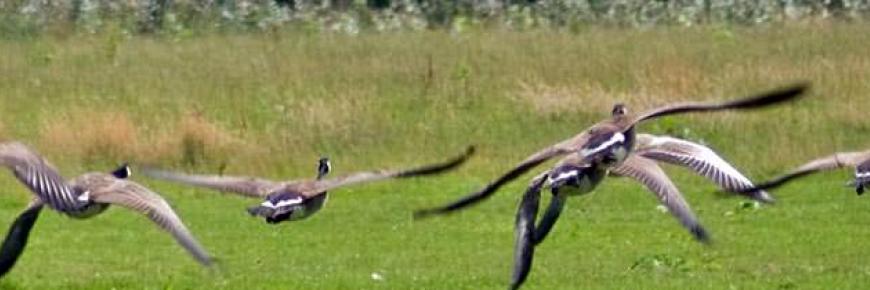The Problem with Ponticum
Rhododendrons are another genus of flowering plants introduced to Britain by the Victorians in the late 18th Century. Originating in the Mediterranean, they were a popular addition to the parkland surrounding stately homes, providing exotic ornamental value as well as cover for game birds such as pheasants. However, the decline of many large country estates and the subsequent reduction in grounds maintenance promoted the unchecked spread of Rhododendrons. Unless established stands are managed continually, they will spread into adjacent areas, quickly out-competing native plant species. Many different species of Rhododendron have been introduced to the UK but there is one in particular which has excelled at invading the British countryside
 The Problem with Ponticum
The Problem with Ponticum
Rhododendron ponticum can reach up to eight metres in height, forming a dense, evergreen leaf canopy which stops light from reaching smaller plants on the ground. Air becomes trapped within it, creating a warm and humid environment ideal for harbouring pests and diseases. A single flower head produces thousands of tiny wind-scattered seeds whilst more established plants can spread by lateral growth of their branches. A single plant can cover many metres of ground with a thick network of branches, helping R. ponticum to invade areas which would otherwise be unsuitable for growth. Plants can dominate large areas of wetland or overhang riverbanks with their canopies, whilst the main stem and roots are based on dryer, more suitable soil. Where a branch touches the ground, roots will grow, thereby continually increasing the area of plant cover. In addition, the roots of R. ponticum form mycorrhizae: a mutually beneficial relationship between the plant and fungi, increasing nutrient uptake and providing a competitive advantage over other plants in areas of low soil quality. R. ponticum also engages in chemical warfare with its native neighbours. Evidence suggests that it may interefer with the germination or establishment of seedlings of competing species, a phenomenon termed allelopathy. The final weapon in the invasive arsenal of R. ponticum is the ability to produce toxic compounds within the tissues of buds and young leaves, making unpalatable or even deadly to grazing organisms.
Once native vegetation has disappeared, wildlife is quick to follow. Birds, bats and insects rely on nectar and berry bearing plants for foraging areas, food and shelter. The dormouse, one of Britain’s most endangered mammal species, has been severely impacted by the encroachment of rhododendron onto its natural habitat. Areas dominated by R. ponticum are often described as barren in terms of flora and fauna, because of the extremely low biodiversity in comparison to native habitats.

Removing Rhododendron
Naturally seeded Rhododendrons do not flower until mature, usually when plants are 10-12 years old. This provides a window of opportunity to prevent uncontrollable growth and avoid a serious infestation. Stems can be removed either mechanically or by hand, staying as close to the ground as possible. R. ponticum plants are resilient and will re-grow after cutting. In most cases an untreated stump will produce shoots and start to flower within 3-4 years. Successful eradication therefore requires the stump removed, ensuring all viable roots are also dug out, or killed using herbicide.
References
Edwards, C. Managing and controlling invasive rhododendron. 2006. Forestry Commission Practice Guide
Photos: Rhododendron (Miss Steel, Ryan Somma)

